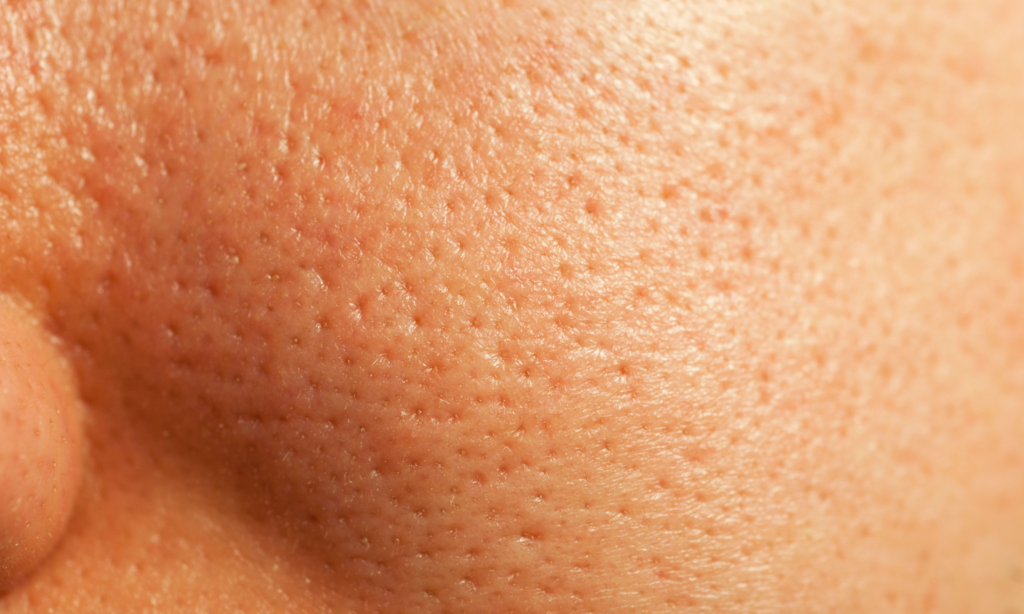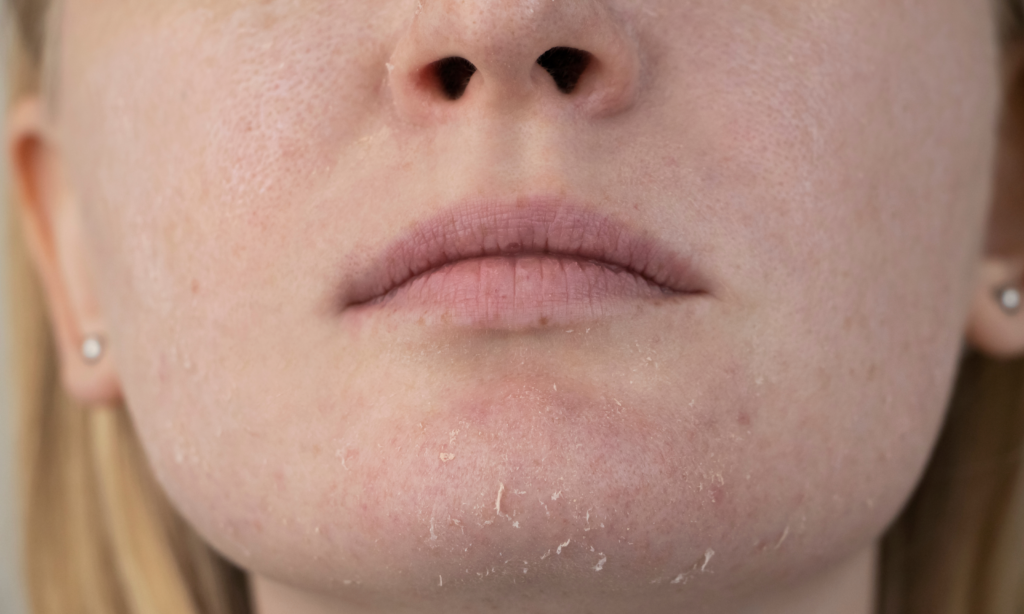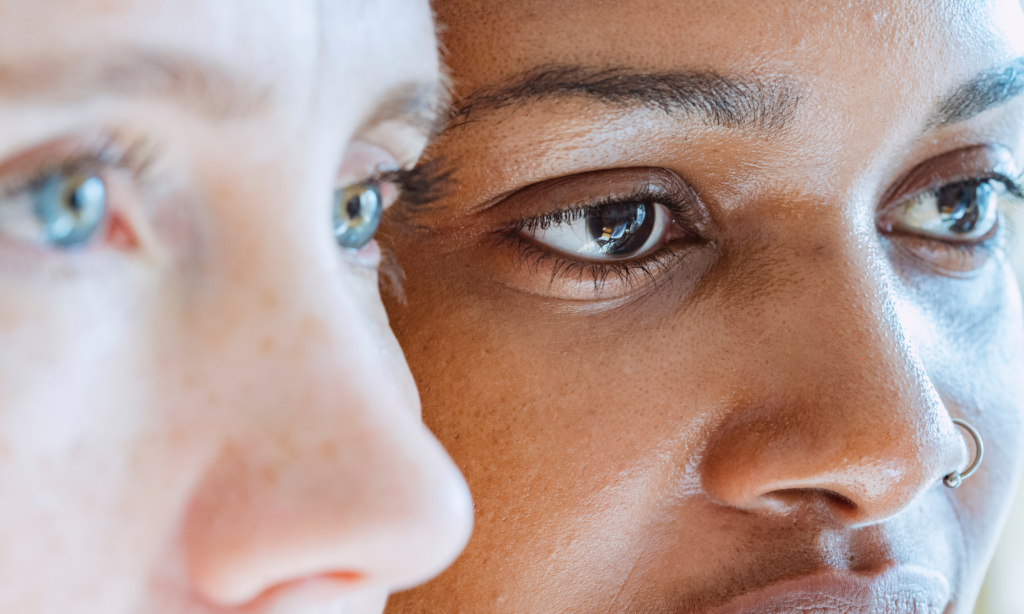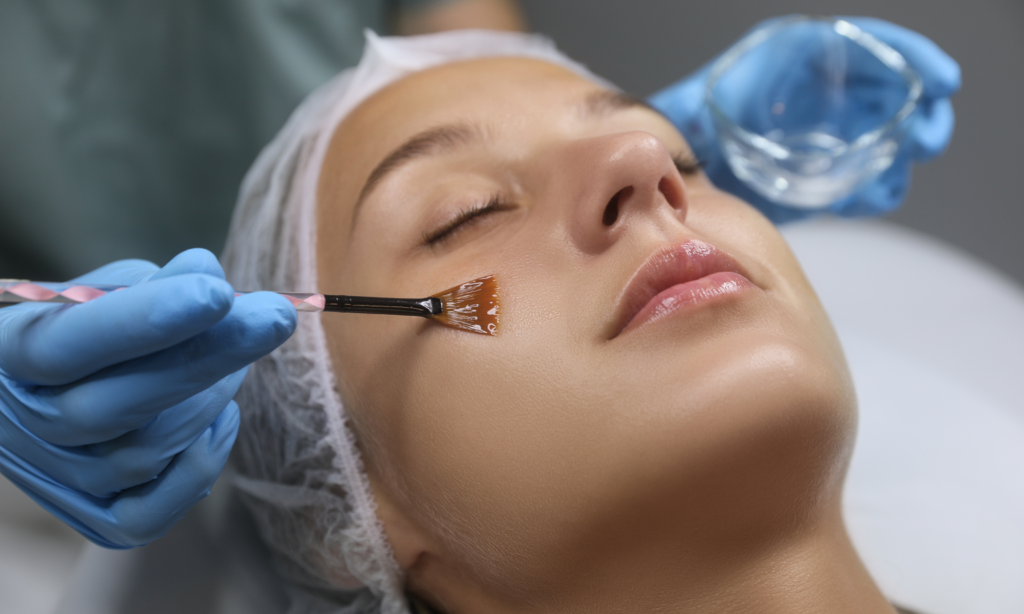Dealing with Textured Skin: Causes, Remedies, and Best Skincare
Textured Skin: Unraveling the Mystery Behind Uneven Complexion
When it comes to our skin, achieving a smooth and flawless complexion is often a top priority. However, the journey to glowing skin isn’t always straightforward. Textured skin, characterized by its uneven surface and irregularities, is a common concern faced by many individuals. In this blog post, we’ll dive deeper into the world of textured skin, understand its nuances, explore its root causes, and effective strategies to address and improve its appearance. Will reveal.
Defining Textured Skin and Its Characteristics
Textured skin refers to a skin condition characterized by an uneven surface, leading to roughness, bumps and irregularities. The condition can manifest in a variety of ways, including enlarged pores, visible acne scars, fine lines, and an overall lack of smoothness. These structural irregularities often lead to less than desirable coloration, leading to frustration and a search for effective solutions.
Addressing Common Concerns Related to Skin Textural Irregularities
The journey to achieving flawless skin is not just about aesthetics. It’s also about confidence and self-esteem. People with textured skin often face problems beyond appearance. They may struggle with makeup application, as the uneven texture can cause makeup to crack and make imperfections more prominent. Additionally, the uneven texture of the skin can affect how light reflects off the skin, affecting its overall glow.
II. Understanding Uneven and Bumpy Skin

A. What Causes Textured Skin?
- Hyperpigmentation and Its Impact on Skin Texture
A major component of textured skin is hyperpigmentation. It occurs when areas of skin become darker than the surrounding skin due to overproduction of melanin. Hyperpigmentation can result from factors such as sun exposure, hormonal changes and skin injury. When hyperpigmentation occurs, it can create uneven patches on the skin’s surface, causing structural irregularities.
- Factors Contributing to Rough and Bumpy Skin
Rough and bumpy skin texture can be caused by a number of factors. First and foremost, the accumulation of dead skin cells on the surface of the skin can create a rough texture. This can be caused by insufficient exfoliation, which causes the complexion to become dull and uneven. Additionally, factors such as dehydration, environmental pollution, and even genetics can contribute to the development of rough and scaly skin.
Finally, understanding textured skin is the first step toward addressing and improving its appearance. From hyperpigmentation to environmental factors, various factors play a role in the development of uneven skin texture. By identifying the causes and characteristics of textured skin, we can pave the way for effective solutions and a journey to a smoother, more radiant complexion.
In the upcoming sections of this blog post, we’ll further explore the complexities of textured skin, exploring skin care practices, treatments and lifestyle changes that can make a meaningful difference. Stay tuned as we begin a comprehensive exploration of textured skin and its transformation.
B. Identifying Textured Skin
1. Describing How Textured Skin Looks and Feels
Textured skin often presents itself as an uneven canvas with variations in surface texture. To the touch, it may feel rough or slightly rough, indicating that the surface of the skin is not evenly smooth. Upon closer inspection, you may notice small raised areas, fine lines, or even small notches. These irregularities can affect the overall appearance of the skin, making it appear less radiant and flawless.
2. Common Areas Affected by Skin Textural Irregularities
Textured skin can affect different parts of the face and body. Some of the most common areas prone to textural irregularities include:
- Cheeks: Uneven skin texture can be particularly noticeable on the cheeks, which often appear as rough patches or raised bumps.
- Forehead: Fine lines, enlarged pores, and uneven skin tone can contribute to structural problems on the forehead.
- Chin: Spots and congestion on the chin can create an uneven surface and affect the overall balance of the complexion.
- Nose: Enlarged pores and blackheads on the nose can contribute to structural irregularities in this area.
- Neck and décolletage: These areas are also susceptible to texture issues, often appearing less smooth and older than desired.
III. Dry Textured Skin and Its Management

A. Causes of Dry Textured Skin
1. Dehydration and Its Effect on Skin Texture
Dehydration plays an important role in the development of dry textured skin. When the skin doesn’t have enough moisture, it can lead to oiliness, roughness and uneven texture. Dehydrated skin often feels tight and uncomfortable, and this lack of moisture can increase the appearance of fine lines and imperfections. Adequate hydration is essential to maintain a smooth and supple skin texture.
2. Environmental factors that contribute to desiccation.
A number of environmental factors can contribute to dry textured skin. Exposure to harsh weather conditions, such as cold winds or dry air, can strip the skin of its natural moisture. Additionally, spending long periods of time in an air-conditioned environment can deplete moisture levels, further exacerbating skin dryness. Environmental pollution and toxins can also compromise the skin’s barrier, causing uneven texture.
Addressing dry textured skin requires a multi-pronged approach that includes hydration, preventative measures and targeted skincare. By understanding the causes of dryness and its effects on skin texture, we can develop an effective strategy to combat this concern.
B. Skincare for Dry Textured Skin
1. Best Practices for Moisturizing Textured Skin
- Moisturizing is a cornerstone of managing dry textured skin. Incorporating the right moisturizing regimens can help relieve roughness, greasiness, and discomfort. Here are some best practices to consider:
- Choose rich, nourishing formulas: Choose moisturizers that are specially formulated for dry skin. Look for ingredients like hyaluronic acid, glycerin and ceramides, which help attract and retain moisture in the skin.
- Apply moisturizer to damp skin: After cleansing, apply moisturizer to slightly damp skin. It helps to seal in moisture and create a protective barrier against environmental stress.
- Use a humidifier: If you spend a lot of time indoors, especially in an air-conditioned or hot environment, use a humidifier to maintain optimum levels of humidity in the air and prevent your skin from drying out. I can help.
Recommended products for nourishment and hydration
When it comes to choosing products for dry-textured skin, it’s important to choose those that prioritize nutrition and hydration. Consider adding the following products to your skin care routine:
- Hydrating Serum: A hydrating serum rich in ingredients like hyaluronic acid can penetrate deep into the skin and increase moisture.
- Rich Moisturizer: Look for a moisturizer that is specifically designed for dry skin. Ingredients like shea butter, oils (such as jojoba or argan) and ceramides can help restore the skin’s natural barrier.
- Exfoliating Treatment: Although exfoliation may seem counterintuitive for dry skin, using a mild exfoliating product once or twice a week can help remove dead skin cells and improve overall texture.
IV. Addressing Uneven Skin Texture

A. Best Facial Treatments for Uneven Skin Texture
1. Professional Facials Targeting Textural Irregularities
Professional facials can play an important role in smoothing out uneven skin texture. Consider treatments like microdermabrasion, chemical peels, and laser resurfacing. These procedures are designed to refine the skin’s surface, stimulate collagen production and promote smooth texture. Consult a licensed skin care professional to determine which facial treatment is best for your individual needs.
2. Benefits of specific treatments for oily skin
Each facial treatment offers unique benefits for improving skin texture:
- Microdermabrasion: This procedure uses a gentle abrasive technique to remove the outer layer of skin, revealing a smoother, fresher complexion.
- Chemical peels: Chemical peels involve applying a chemical solution to the skin, which stimulates the growth of new skin cells.
- Laser Resurfacing: Laser treatments use focused beams of light to target specific areas of the skin, stimulate collagen production and improve texture.
Adding these professional treatments to your skincare journey can help you achieve that.
B. Skincare Products to Improve Skin Texture
1. Topical Treatments for Evening Out Skin Texture
Elevating your skincare routine with targeted topical treatments can work wonders in achieving a smoother skin texture. Explore these effective options:
- Retinoids: Renowned for their skin-renewing properties, retinoids like retinol and tretinoin promote cellular turnover, unveiling a smoother and more refined complexion over time.
- Alpha Hydroxy Acids (AHAs): AHAs, including glycolic acid and lactic acid, gently exfoliate the skin’s surface, aiding in the reduction of roughness and uneven texture.
- Vitamin C Serum: A vitamin C serum not only bolsters skin’s defense against environmental stressors but also encourages collagen production for a plumper and smoother texture.
2. Ingredients to Look for in Skincare Products
When scouting for skincare products that enhance skin texture, prioritize those enriched with the following ingredients:
- Hyaluronic Acid: A moisture magnet, hyaluronic acid quenches skin’s thirst, plumping it up and enhancing texture.
- Niacinamide: This multitasking ingredient regulates sebum production, thereby refining the appearance of pores and contributing to smoother skin.
- Peptides: Known as collagen’s building blocks, peptides stimulate its production, resulting in firmer and smoother skin over time.
- Salicylic Acid: Particularly beneficial for those prone to breakouts, salicylic acid exfoliates pores, aiding in diminishing blemishes and enhancing skin’s texture.
V. Treating Textured Skin on the Face

A. Home Remedies for Textured Skin
1. DIY Treatments for Smoother Skin Texture
Elevate your skincare game with these at-home treatments that contribute to a smoother skin texture:
- Exfoliating Scrub: Combine oatmeal and honey to craft a gentle exfoliating scrub that banishes dead skin cells, unveiling a softer and smoother complexion.
- Honey Mask: Applying raw honey for 15-20 minutes infuses the skin with natural humectants, increasing hydration and refining texture.
2. Natural Ingredients to Consider for Facial Care
Nature’s pantry boasts an array of ingredients that cater to textured skin:
- Aloe Vera: Revered for its soothing properties, aloe vera soothes irritation and enhances the skin’s smoothness.
- Jojoba Oil: Non-comedogenic jojoba oil mimics skin’s natural oils, bestowing lightweight moisture and balance, thus improving texture.
- Green Tea Extract: Rich in antioxidants, green tea extract combats inflammation and nurtures a healthier complexion, contributing to smoother texture.
B. Lifestyle Changes for Better Skin Texture
1. Healthy Habits to Support Skin Health
Sculpting smoother skin texture goes beyond skincare products, embracing a holistic approach:
- Stay Hydrated: Adequate water intake ensures skin remains hydrated, leading to a plump and smooth appearance.
- Prioritize Sleep: Quality sleep facilitates skin repair, contributing to a refreshed and refined texture.
- Stress Management: Taming stress through practices like meditation and yoga supports smoother skin by curbing cortisol production.
2. The Role of Diet and Hydration in Skin Texture
Your diet shapes skin health. Embrace a diet rich in fruits, vegetables, lean proteins, and healthy fats. Antioxidant-packed foods like berries and leafy greens shield skin from damage, maintaining a polished texture. Furthermore, ample hydration preserves moisture balance, resulting in a supple and smoother appearance.
Incorporating these lifestyle changes fosters a synergy between internal and external efforts, ultimately leading to a journey towards achieving a smoother and more refined skin texture.
VI. Dealing with Large Pores and Rough Skin Texture

A. The Relationship Between Pores and Skin Texture
1. Understanding the Connection Between Pore Size and Texture
The relationship between pore size and skin texture is complex. Pore size affects the overall appearance of skin texture. Enlarged pores can contribute to an uneven and rough complexion. Pores become more noticeable when they are clogged with dirt, oil or dead skin cells. This can lead to a bumpy and uneven surface. Addressing pore concerns is crucial to improving overall skin texture.
2. Tips for Minimizing the Appearance of Large Pores
Minimizing the appearance of large pores is achievable with consistent efforts:
- Gentle Cleansing: Regular cleansing with a gentle cleanser helps prevent debris buildup in the pores, reducing their visibility.
- Exfoliation: Incorporate exfoliation into your routine to remove dead skin cells that can clog pores and lead to roughness. Choose chemical exfoliants like AHAs and BHAs for effective results.
- Pore-Refining Products: Look for skincare products containing niacinamide and salicylic acid, which can help reduce the appearance of pores and improve skin texture.
B. Specialized Skincare for Rough Skin Texture
1. Targeted Products for Addressing Rough Skin
Combatting rough skin texture requires specialized products:
- Chemical Exfoliants: Products containing glycolic acid, lactic acid, or salicylic acid gently remove dead skin cells, promoting a smoother surface.
- Serums with Hyaluronic Acid: Hyaluronic acid-infused serums provide hydration, which in turn softens and smooths the skin’s texture.
- Moisturizers with Ceramides: Ceramides bolster the skin’s barrier, leading to improved texture and enhanced moisture retention.
2. Incorporating Exfoliation into Your Skincare Routine
Exfoliation is key to combating rough skin texture:
- Frequency: Depending on your skin type, exfoliate 1-3 times a week to avoid over-exfoliation.
- Gentle Techniques: Use gentle physical or chemical exfoliation methods to avoid irritating the skin.
- Post-Exfoliation Care: Follow exfoliation with moisturizing products to ensure the skin remains hydrated and soothed.
By incorporating targeted products and embracing exfoliation, you can embark on a journey towards smoother and more refined skin texture.
Suggestions for Continuing Your Skincare Journey
- Hada Labo cleansing oil: The Japanese Skin Secret
- 10 Best Coconut Body Washes for Luxurious and Nourished Skin
- Can Water Fasting Really Clear Your Skin? Discover the Truth
Related Topics
- Native Body Wash: The Holy Grail of Skincare? Our Honest Review
- 12 Pore Minimizing Face Washes: Your Key to Clearer Skin
- The Ultimate Guide to Retinol: Understanding, Benefits, and Best Products
VII. How to Improve and Maintain Smooth Skin Texture

A. Long-Term Skincare Approach
1. Building a Personalized Skincare Routine
A personalized skincare routine is essential for achieving and maintaining smooth skin texture. Consider the following steps:
- Cleansing: Start with a gentle cleanser to remove dirt and impurities without stripping the skin.
- Exfoliation: Incorporate exfoliation to slough off dead skin cells and promote cell turnover. Choose the right exfoliant for your skin type.
- Treatment Products: Use targeted treatment products like serums containing ingredients like retinol, AHAs, or peptides.
- Moisturization: Hydrate your skin with a nourishing moisturizer that locks in moisture and enhances texture.
- Sun Protection: Always apply broad-spectrum sunscreen to shield your skin from UV damage that can impact texture.
2. Consistency and Patience in Achieving Results
Achieving and maintaining smooth skin texture requires dedication and patience. Consistency is key; results may take time to become noticeable. Stick to your skincare routine and give your skin the time it needs to show improvements.
B. Seeking Professional Advice
1. Dermatologist Recommendations for Textured Skin
Consulting a dermatologist can provide personalized guidance for addressing textured skin. They can recommend products, treatments, and lifestyle changes based on your skin’s unique needs.
2. In-Office Procedures for Skin Texture Improvement
Dermatologists offer various in-office procedures to improve skin texture, including microdermabrasion, chemical peels, laser therapy, and microneedling. These procedures can yield significant improvements in texture and overall skin appearance.
VIII. Conclusion
Embrace the journey towards improved skin texture with confidence and self-care:
Emphasize the Importance of Embracing Textured Skin
Textured skin is a natural part of our uniqueness. Embrace it as a testament to your individuality and beauty.
Encourage Self-Confidence and Self-Care for Healthier Skin
Confidence radiates from within. Nurture your self-confidence by embracing your skin and practicing self-care rituals that contribute to healthy and radiant skin.
Remember, achieving smooth skin texture is a journey that combines effective skincare, healthy habits, and self-love. Embrace your skin’s uniqueness, and enjoy the process of achieving your desired results.
FAQs
Getting rid of bumpy skin involves a multi-faceted approach. It includes consistent skincare routines, exfoliation, hydration, and using products containing ingredients like salicylic acid or retinol to promote smoother skin texture.
In many cases, bumpy skin can improve and even disappear with proper care. Adopting a skincare routine tailored to your skin’s needs, avoiding harsh products, and staying patient can contribute to smoother skin over time.
3. How to Get Rid of Bumpy Skin on Face?
To address bumpy skin on the face, consider exfoliating regularly to remove dead skin cells, using products with gentle chemical exfoliants like AHAs or BHAs, and maintaining proper hydration to support skin’s natural healing process.
Bumpy skin can stem from various factors such as clogged pores, dead skin cell buildup, excess oil production, or skin conditions like acne or keratosis pilaris. Identifying the underlying cause is essential for effective treatment.
5. What Causes Bumpy Skin?
Bumpy skin can be caused by factors like clogged pores, inflammation, genetics, hormonal imbalances, or skin conditions. External factors such as using harsh products or not exfoliating regularly can also contribute to rough texture.
6. How to Make Foundation Look Smooth on Bumpy Skin?
To achieve a smoother appearance with foundation on bumpy skin, start with a hydrating primer. Opt for a lightweight, buildable foundation formula and use a makeup sponge or brush for application. Lightly press and blend to avoid emphasizing texture.

